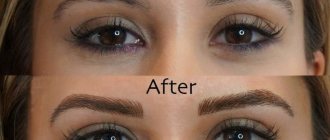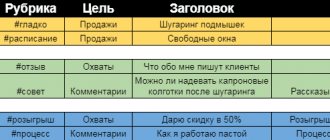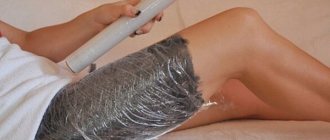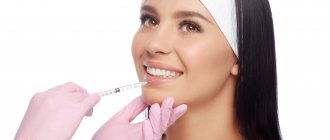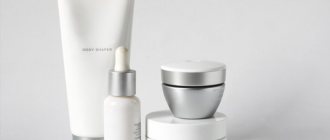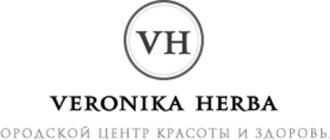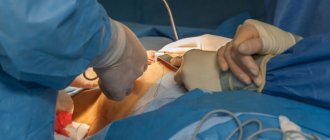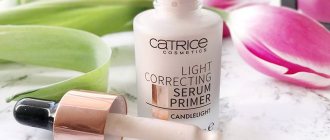Poor nutrition, stress and a sedentary lifestyle lead to extra pounds. Neither strict diets nor exhausting physical training often help get rid of them. It’s especially disappointing when the weight goes away, but the problem areas don’t become slimmer. It is for such cases that a unique technique for the invasive administration of vitamin cocktails was developed. It is especially noteworthy that this technique was created by the French, and they, as you know, know everything about beauty.
Mesodissolution
Mesotherapy techniques have been used in cosmetology for a long time. Mesodissolution (lipodestruction) is one of its varieties, which is an injection procedure that is used to correct the figure by breaking down fat formations. The technique involves a course of injections of special drugs.
Features of mesodissolution
The mesodissolution procedure is carried out for zonal volume correction, dissolution of fat layers, and the fight against cellulite. Other popular procedures, such as lymphatic drainage, wraps, massage, also help reduce fat, but their disadvantage is that lipid cells remain in place and subsequently grow again.
Mesodissolution is a type of mesotherapy
The technique has the following features.
- Use of substances with lipolytic effect.
- The drugs are administered to a depth of 6 to 13 mm.
- Injections are given into specific areas that need to be corrected.
- Injections are placed on the problem area, keeping a distance of 2 cm between them.
- The syringe needle must be inserted into the skin at an angle of 90 degrees.
This technique has certain features
Facial mesotherapy procedures in St. Petersburg at the EsteticAlliance clinic
For many women, deciding to get injections in the face is very difficult because of the subconscious fear of pain and thoughts that something might go wrong. Confidence and trust in the cosmetologist is crucial, because the result of the procedure largely depends on the knowledge and experience of the doctor who performs it. The use of local anesthetics makes the procedure almost painless.
We understand your experiences and concerns, so during your consultation our doctor will talk with you, identify your skin problems, and assess the condition of your body as a whole. He will also tell you about the features of the method and medications specifically for you. After which you will make a decision regarding the use of mesotherapy for the face and lips.
Sign up for a consultation
The drugs we use for mesotherapy
We recommend Princess (Austria) for facial mesotherapy. This is high quality hyaluronic acid without impurities. Almost immediately after administration, Princess activates metabolic processes in the skin and saturates it with moisture. More details about the drug can be found here.
For procedures we use the drugs Princess (Austria), Juvederm (France), IAL-System (Italy), Belotero (Switzerland), Glytone (France), Yvoire (South Korea) , Nucleonix/Nukleonix (Italy). For mesotherapy of the skin around the eyes, the drug Lighteyes (PromoItalia) is used - an excellent meso-cocktail for delicate, sensitive skin under and around the eyes.
Skin structure
You can better understand the mechanism of action of mesodissolution by studying the structure of the skin.
Human skin has 3 layers.
- The epidermis, consisting of an outer layer represented by dead keratinized cells, and a germ layer, the task of which is the constant division of cells and the replacement of old ones with younger ones.
- Dermis. It is represented by a loose connecting structure. It consists of muscle and collagen fibers, giving it elasticity and firmness.
- Subcutaneous fat tissue. Adipocytes, fibroblasts and macrophages are located here. It also contains nerve endings, hair follicles, blood vessels, sebaceous and sweat glands.
Human skin consists of three layers
By the way . The thickness of the first two layers is no more than 0.4 cm.
The emergence of mesotherapy
The concept of mesotherapy appeared in 1958. The essence was the introduction of medications into the layers of the epidermis. The purpose of such an invasive intervention is to influence organ cells with cells of a similar origin.
Over time, mesotherapy has changed, becoming more advanced and effective. Solutions were injected in microscopic doses into the border area between the skin and fatty tissue and even into the tissue itself. In this case, the needle was inserted to a depth of up to 1.5 cm, and sometimes more. Injections were placed into muscle tissue, nerve fibers and blood vessels. All this has made the concept of mesotherapy quite confusing.
Mesotherapy is carried out in different ways
Mesotherapy and mesodissolution: aspects of implementation
mesotherapy procedure involves the introduction of drugs or their mixtures under the skin in microscopic doses to a depth of 0.5-6 mm . For this, very thin and short needles are used. In this way, the skin receives the vitamins , vasodilators, and amino acids it needs. After this, the skin becomes fresh, wrinkles are reduced, its elasticity increases, the skin structure is restored, scars and stretch marks are reduced, and the appearance of cellulite is reduced . Acne is treated with mesotherapy.
The difference between mesodissiliation and mesotherapy methods
The main methods of mesotherapy involve reducing the size of lipid cells and reducing body weight, improving skin condition and eliminating scars, and rejuvenation, while with mesodissolution, local areas of the body are corrected due to the breakdown of fat cells and their removal from the body. With mesodissolution, it is possible to simultaneously administer several drugs at once, which increases its effectiveness by 5 times compared to mesotherapy.
Mesotherapy and mesodissolution have differences
Usually a set of procedures is prescribed to increase the effectiveness of the technique.
- Hardware impact on the lymphatic system with compressed air. Helps eliminate swelling, reduce body weight and transform the figure due to the balanced distribution of fluid in the body.
- Lymphatic drainage massage improves lymph flow, which leads to faster metabolism and improves nutrition of cellular structures due to a better supply of oxygen.
- Hydromassage, in which the body is washed with a stream of water under pressure.
You can combine mesodissolution with other weight loss methods
Advantages of the technique
The indisputable advantage of an innovative non-surgical method of improving the geometry of one’s own body is painlessness. Specialists use uniquely thin needles to administer a hypoosmolar cocktail.
Therefore, during the event you will only feel a gentle, light tingling sensation. But what all patients will especially like is the lack of need to change their own diet. Mesodissolution itself can normalize metabolism and liver function.
Another advantage of this cosmetic procedure is the absence of an adaptation period. There is no need to wear such uncomfortable compression garments or a bandage.
Therefore, mesodissolution can be confidently called not only one of the most productive procedures, but also the most comfortable of all that modern cosmetology offers.
The difference between mesodissolution and liposuction
Mesodissolution is the destruction of adipose tissue. It occurs as a result of the invasive injection of a drug that dissolves fat cells. In this case, the tissues are not injured and do not suffer in the same way as the skin and blood vessels.
Liposuction is a surgical procedure during which the doctor, using special equipment, destroys lipid formations and immediately removes them from the body. This technique is very traumatic and requires general anesthesia and postoperative rehabilitation.
Liposuction is a more traumatic technique
Note! There are only two mechanisms for correcting the silhouette: reducing the fat layer and destroying it. With the help of fitness, diet and mesotherapy, the lipid layer can be significantly reduced. But it is more effective to get rid of fat cells through mesodissolution and liposuction.
How long does the course of mesodissolution last?
In this case, the concept of “course” is conditional. Some patients need 1-2 sessions to achieve the desired results, while others need 7-10. Everything here is individual: it depends on the amount of unwanted fat tissue and the body’s reaction to the procedures. As a rule, treatment takes place 1-2 times a week for 6-10 weeks. The positive effect is noticeable after 2-3 sessions.
Important information!
After mesodissolution, a manual massage is required. It is required for:
- final figure correction;
- removing drug residues from the body;
- speeding up the process.
If your main goal is weight loss and getting rid of cellulite, then a course that begins and ends with lymphatic drainage massage is suitable for you. After completing such a program, you will be amazed at the results. The technique is ideally combined with other figure correction courses. Remember that this type of cosmetic procedure only works on a prepared body; this is a very important and key point to achieve the desired result. Bonus: you get amazing skin!
Characteristics of drugs
During mesodissolution, the drugs used are injected directly into the fat layer. They are used for both individual and complex administration. They all fit together perfectly. If necessary, a specialist can add additional components to them.
Different substances are used for mesodissolution
Let's talk about some substances.
Sodium deoxycholate . It is found in the human body in its natural form. Invasive administration of this drug does not cause rejection. The substance helps to carry active components into cells due to its destructive effect on cell membranes.
Phosphatidylcholine . Produced by the human body. Designed to dissolve and remove lipids out along with biological fluids. Using the drug in its pure form is not particularly effective, since it has low permeability into the cellular structure.
The aqueous solution is hypotonic . Used as an aid. It is not used as an independent drug, as it provokes the formation of scars.
Can be used, for example, sodium deoxycholate, phosphatidylcholine
Before undergoing the procedure, you must consult a specialist. The doctor will select the components for the solution on an individual basis. Particular attention is paid to the characteristics of the body and areas of the body that need to be subjected to the procedure. In addition to the main ingredients, the following components can be used:
- lidocaine;
- caffeine;
- MPH-lipolytic complex;
- vitamin C;
- procaine;
- deoxyshock.
Important! When using aids, you must make sure that the patient is not allergic to them.
Additional components are also used
Mesodissolution for the protection of harmony
Contents of the article
In the understanding of modern people, female beauty is not only shining eyes and porcelain skin tone. An integral part of a stylish look is a slim figure.
Unfortunately, not every girl has been blessed by nature with ideal parameters that could attract the gaze of men. Therefore, for a long time now, women have invariably been actively searching for their own way to lose weight and make their body toned.
Among the variety of means and methods, one cannot fail to note one of the revolutionary methods - mesodissolution.
Possible complications
Almost always, medissolution causes temporary side effects. After the procedure, patients come with the following complaints:
- irritation and itching;
- the appearance of bruises;
- swelling;
- local hyperemia (redness) of the skin;
- pain in the treated area;
- lack of appetite;
- gagging;
- slight increase in temperature.
Typically, patients experience some side effects after the procedure.
Note! Side effects can occur individually or in combination. They pose health risks, but cause discomfort.
Until the injection field heals, it must be treated with antiseptic drugs. After the puncture sites have healed, you can apply cooling compresses and ointments against bruises. If you have a decreased appetite, it is not recommended to forcefully eat. Much attention should be paid to water balance, as high fluid levels increase swelling.
After the session, not only side effects may occur, but also complications such as tissue necrosis, inflammation, and allergic reactions. To avoid them, you need to additionally consult a doctor. Manifestations of allergies should be treated with antihistamines. If the therapy gives a complication, you need to immediately inform the cosmetologist and therapist.
If severe side effects occur, consult a doctor
Contraindications to the procedure
The technique has the same contraindications as other injection therapies:
- period of pregnancy and lactation;
- allergy to drug components;
- mental disorders;
- oncological diseases;
- renal and hepatic pathologies;
- local disruption of the epidermis (cuts, inflammation, wounds);
- diseases of the heart and blood vessels;
- infectious skin infection;
- epilepsy;
- poor blood clotting.
The procedure is contraindicated for kidney and liver diseases.
Important! In case of menstruation or high body temperature, relapse of chronic diseases, sessions are postponed to another time.
Contraindications
As before any injection procedure, a preliminary consultation with a cosmetologist is necessary to exclude contraindications. The course of mesodessolution is not carried out until the age of 18, during pregnancy and lactation. It is prohibited to carry out the procedure in the presence of oncological pathologies, epileptic attacks and other severe pathologies of the nervous system, blood clotting disorders, severe damage to the liver and kidneys, disturbances in the functioning of the endocrine system, and serious heart disease.
The procedure will be rescheduled in the presence of acute colds, exacerbation of chronic pathologies or the presence of inflammatory, infectious skin lesions at the injection sites, during menstruation.
It is prohibited to carry out the procedure with a specific composition of lipolytics if there is an allergic reaction to individual components.
Cost of mesodissolution
The price for one session is about 3,000 rubles. You can achieve maximum effect by completing a full course consisting of 5–10 procedures. This means that the minimum cost of the course will be 15 thousand rubles.
The cost of one procedure is determined by the size of the treated area and the volume of the drug used. Pricing also depends on the policy of the cosmetology clinic.
The cost of one mesodissolution procedure is influenced by various factors.
We will indicate the average cost of the procedure in different cities of Russia.
| City | Cost of one procedure |
| Moscow | 4500 rub. |
| Saint Petersburg | 3300 rub. |
| Voronezh | 2890 rub. |
| Nizhny Novgorod | 2900 rub. |
| Vladivostok | 3200 rub. |
| Samara | 3000 rub. |
| Kaliningrad | 2900 rub. |
Preparation period
14–15 days before the procedure, the patient is prescribed diuretics. This is necessary to remove excess water from the body. If anticoagulants are used, they should be discontinued after consulting a doctor. It is recommended to eat foods high in protein and vitamins, but high-carbohydrate foods are excluded from the diet.
The patient will have to prepare for the procedure in advance
Due to the pain of the procedure, before the procedure, the treatment area is lubricated with painkillers or other methods of anesthesia are used. This is necessary not only to relieve pain, but also to prevent hematomas. In case of vascular damage, the patient will not experience severe pain.
Important! After the session you cannot eat for two hours. You need to drink clean water as much as possible.
Possible complications and side effects
Since the procedure involves punctures of the skin, possible complications may include discomfort, itching and redness at the injection site, and swelling of the skin. There may be an increase in temperature in the injection area and mild general malaise. Extremely rare complications include allergic reactions to drugs and suppuration of the skin in the injection area (therefore, if the skin is damaged and there are pustules, the procedure will be postponed until they are completely healed). To prevent infections, the skin is pretreated with antiseptics before injections. After the procedure, injection sites should also be treated with antiseptic solutions for the first two days.
Mesodissolution technology
The procedure has its own characteristics. Through injections with a multi-injector (mesotherapy device) or a sterile syringe, solutions or cocktails with a weak concentration of salts are introduced into the deep subcutaneous layers. The injections are placed at an angle of 90 degrees. The distance between the puncture sites should be 2 cm. The procedure lasts from 30 minutes to 1 hour.
The drug is administered using a syringe or multi-injector
Under the influence of the solution, cell membranes soften and rupture. Lipid cells dissolve. They are not able to recover again, since they are eliminated very quickly using the lymphatic system.
The cocktails contain pharmacopoeial caffeine or sodium benzoate. They reduce body fat, increase diuresis, dilate blood vessels and prevent the development of the inflammatory process.
Therapy is carried out in 2 stages. The preparatory procedure consists of 3 drainage procedures. After this, a special liquid with a low concentration of salts is injected. To administer solutions, syringes with a capacity of 19 or 20 ml are used. After mesodissolution, the fat layers on the abdomen and thighs are reduced from 4 to 6 cm. Skin folds are reduced by 1 cm.
During the procedure, special substances are introduced to help dissolve fat.
It is impossible to carry out the procedure at home. Mesodissolution is carried out only by professional cosmetologists who have undergone special training. Carrying out the procedure on your own will not only not give a good result, but can also cause serious complications. This is due to the fact that it is almost impossible to independently perform an injection at the required angle and to the required depth.
After the session, it is prohibited to visit saunas, gyms, baths and swimming pools for 5 days. It is necessary to avoid exposure to the sun. Two days after the session, massage is allowed.
You should not sunbathe for some time after the procedure.
PsyAndNeuro.ru
The purpose of this systematic review and meta-analysis was to examine the effects of caffeine on anxiety and panic attacks in patients with panic disorder and healthy controls. The following issues were considered:
- What is the effect of caffeine on subjective anxiety in adult patients with panic disorder and in healthy adults? Do these effects differ between sick and healthy people and is the effect dose dependent?
- What is the effect of caffeine on the occurrence of panic attacks in adults with panic disorder and in healthy adults, do these effects differ, and is the effect dose dependent?
Randomized placebo-controlled trials and controlled clinical trials in patients with panic disorder were selected for review. Studies with or without a psychiatrically healthy control group were included. All participants are 18 years of age or older.
The experimental intervention in the selected studies was placebo-controlled oral caffeine (tablet or drink). In studies in which the drink was used, the tastes of the drinks in the experimental and control groups were the same or as close as possible, for example, caffeine was added to decaffeinated coffee. Only studies with blinding were selected, but double blinding was not a mandatory selection criterion. The study outcomes included reports of anxiety and/or panic attacks after the experimental intervention. Only original articles written in English were selected, without restrictions on publication date.
After excluding studies that did not meet the selection criteria, 10 studies remained. A total of 244 patients with panic disorder took part in them.
Caffeine and placebo were administered orally in capsules (2 studies), instant coffee (5 studies), or other liquids (3 studies). Seven studies used a fixed dose of 480 mg caffeine, one study used a fixed dose of 400 mg, and two studies used a fixed dose of caffeine based on body weight, 10 mg/kg and 7 mg/kg, representing 750 mg and 525 mg caffeine, respectively, in a participant with body weight 75 kg.
Anxiety levels following caffeine intake were recorded in 6 studies, including 121 patients with panic disorder and 111 healthy controls. Caffeine increased anxiety levels in patients (Hedges' g = 1.94 [95% CI: 1.19–2.69]) and in healthy controls (Hedges' g = 0.91 [95% CI: 0.46–1.36] ) with an overall larger increase in the number of patients (Hedges' g = 1.02 [95% CI: 0.09–1.96]).
The results of the meta-analysis are consistent with the findings of studies that examined anxiety after caffeine ingestion but were excluded from the formal meta-analysis because they did not report data eligible for meta-analysis or did not include healthy subjects for comparison.
Only three studies provided data on changes in anxiety levels for both caffeine and placebo, precluding a proper meta-analysis of the effects of caffeine compared with placebo. However, all five studies that reported statistical comparisons of caffeine with placebo reported greater increases in anxiety with caffeine compared with placebo, and all four studies in healthy subjects reported larger effects in patients with caffeine. panic disorder, compared with the effect produced in healthy people.
Panic attacks after taking caffeine or placebo were reported in nine studies involving 237 patients with panic disorder, and six studies involving 115 healthy controls. A meta-analysis of six studies involving patients (n = 128) and healthy controls (n = 115) found an increased risk of panic attack after caffeine ingestion in patients compared with healthy controls (log RR: 3.47; 95% CI 2.06-4.87 ), Q(5) = 8.45 p = 0.133. A total of 69 patients (53.9%) and 2 healthy controls (1.7%) experienced a panic attack after taking caffeine. In three studies that did not include healthy subjects and were therefore not included in the meta-analytic effect size analysis, 52 of 109 patients (47.7%) had a panic attack. Overall, across nine studies, 121 (51.1%) patients and 2 (1.7%) healthy controls experienced a panic attack after taking caffeine. None of the studies reported panic attacks after taking a placebo.
Due to the variability of caffeine doses used in the included studies, a dose-response relationship could not be calculated.
The present systematic review and meta-analysis shows that caffeine, approximately equivalent to 5 cups of coffee, causes anxiety in both patients with panic disorder and healthy individuals, with affected individuals being more vulnerable and at higher risk of a panic attack. Insufficient numbers of studies using caffeine doses other than 480 mg precluded analysis of dose-response effects.
The results suggest that caffeine has a strong effect on subjective anxiety in patients with panic disorder, as well as in healthy controls.
It should be noted that there was quite a large heterogeneity of effect sizes across the included studies. Separate studies have reported both higher levels of anxiety in the group with panic disorder and equal levels in the group of patients and the group of healthy people. The calculated effect size may not be as representative of the population as in the case of the panicogenic effects of caffeine, where all studies pointed in the same direction of an increased risk of panic attacks in patients. However, studies finding higher levels of anxiety in disease groups were not found to differ in any way from studies reporting equal levels of anxiety. One proposed factor may be differences in the distribution of adenosine receptor genotypes across studies, for example, ADORA2A polymorphisms have been shown to influence sensitivity to caffeine-induced anxiety in healthy individuals. However, this can only be speculative because ADORA2A polymorphisms were not examined in any of the included studies and, to our knowledge, have not been examined in any studies of the effects of caffeine on patients with panic disorder.
Genetically determined susceptibility to the anxiogenic and panicogenic effects of caffeine is suggested by a study that showed similar susceptibility in patients and their first-degree relatives, and also showed that while a healthy person experienced a panic attack after consuming caffeine, a first-degree relative suffering from a panic attack disorder, I also had a panic attack after taking it [1].
Many questions remain unanswered. One of the main questions is whether there is a relationship between caffeine dose and anxiety/panic attacks. This is important when discussing clinical implications of the findings because the large doses of caffeine (5 cups of coffee) used in the studies do not correspond to the normal dose of caffeine consumed in everyday life (about 100 mg in a cup of coffee). In healthy people, moderate doses of caffeine (100-300 mg) have positive effects on mood, concentration and learning, while higher doses (>400 mg) may cause anxiety.
Of course, patients with panic disorder are more sensitive to the anxiogenic and panicogenic effects of caffeine compared to healthy individuals, but it is still unknown how they respond to low to moderate doses. Variants of the adenosine receptor 2A (ADORA2A) gene are associated with both an increased risk of developing panic disorder and a stronger anxiogenic effect of regular caffeine doses (100-150 mg) [2,3], although this may only affect individuals with low habitual consumption caffeine
Healthy people may develop tolerance to the anxiogenic effects of caffeine by consuming caffeine, but it is unclear whether this also applies to patients with panic disorder. In the studies included in this review, there was no clear difference in habitual caffeine consumption between diseased and healthy participants, suggesting that patients do not develop tolerance to the anxiogenic effects of caffeine.
On the other hand, there are cases where patients with excessive anxiety showed improvement when abstaining from caffeine [4]. Based on these data, guideline authors advise patients with panic disorder to abstain from caffeine, but it would be better to tailor recommendations rather than focusing on a group of patients with heterogeneous etiologies and responses to caffeine. It is best to evaluate the effects of caffeine on a specific patient as part of standard treatment.
There are beneficial effects of caffeine consumption, and not all patients with panic disorder or other anxiety disorders need to avoid caffeine due to anxiogenic effects, but physicians and patients should be aware of such effects. Additionally, doctors should be aware that if a person experiences a panic attack after consuming caffeine, it may be a sign of panic disorder, since healthy people rarely experience panic attacks caused by caffeine, at least in doses up to 750 mg.
Interestingly, in the studies reviewed, about half of the patients with panic disorder experienced a panic attack after taking caffeine. This may indicate that these patients develop panic attacks and full-blown panic disorder differently than those who do not have a panic attack after taking caffeine. Accumulating evidence points to homeostatic and respiratory patterns in patients who respond with a panic attack to caffeine. This is consistent with the increasingly accepted idea of heterogeneity in both the etiology and symptomatology of panic disorder, as well as other anxiety and psychiatric disorders.
The anxiogenic and panicogenic mechanisms of caffeine are still largely unknown. Caffeine is known to non-selectively block adenosine receptors, of which the most interesting are the inhibitory A1 receptors and mainly the excitatory A2A receptors. Of interest in this context is the involvement of these receptors in chemosensation, respiratory regulation, heart rate regulation, as well as threat detection and emotional processing.
With regard to chemosensation, adenosine receptors may mediate caffeine-induced panic, either by increasing respiratory activity in chemosensory brain regions such as the brainstem, or through other direct or indirect changes in homeostasis. For example, caffeine typically causes vasoconstriction through binding to the A2A receptor in the endothelium, and it has been suggested that some people may be particularly sensitive to this effect [5].
Research points to common mechanisms underlying caffeine-induced panic and airway vulnerability. The respiratory subtype of panic disorder, which is characterized by symptoms such as shortness of breath, a feeling of suffocation, and hyperventilation, is associated with increased sensitivity to caffeine [6]. Moreover, patients who experience a panic attack after taking caffeine also react to the 35% CO2 test [5]. This suggests that caffeine induces panic in the same way as CO2.
Adenosine A1 and A2A receptors are also involved in the regulation of myocardial oxygen function and coronary blood flow. Antagonism of these receptors leads to an increase in heart rate, which is another common symptom of panic attacks. However, heart rates did not differ between panic disorder patients and controls in caffeine studies, suggesting that caffeine acts through other mechanisms to trigger anxiety and panic attacks.
Psychological explanations may improve understanding of the panicogenic and anxiogenic effects of caffeine. People prone to panic interpret bodily symptoms, such as a racing heart, as signals of an impending disaster (such as an incipient heart attack). Therefore, an increase in heart rate due to peripheral adenosine receptor antagonism may contribute to the onset of panic attacks in susceptible individuals. In other words, the positive arousal effects caused by small doses of caffeine (up to 300 mg) can increase anxiety and cause panic attacks, especially at higher doses in sensitive people. Behavioral manifestations of caffeine's effects in patients may also be learned responses. The sensations initially caused by caffeine are associated with anxiety and panic through interoceptive conditioning.
From this perspective, panic disorder may be considered unique among anxiety disorders in that the stimuli that induce anxiety and fear are interoceptive. Thus, psychological treatments for panic disorder may focus on treating the anxiety disorder to reduce anxiety, and treating the physical condition to reduce anxiety about the medical condition, rather than reducing the actual physical symptoms.
Peripheral receptor antagonism that produces bodily sensations may be due to blocking of receptors in the brain, such as the amygdala and other brain regions such as the periaqueductal gray matter, where receptor antagonism may lower the threshold for detecting threat, making predisposed individuals even more prone to catastrophic interpretation of normal bodily symptoms.
The only study to date examining the effects of caffeine on emotional processing in the brain using functional magnetic resonance imaging found increased threat-related activity in the periaqueductal gray matter [7], a brain region associated with panic attacks and panic disorder. It should also be noted that panic attacks sometimes occur without any sense of fear, suggesting that there is a need for more research that separates changes in the homeostatic mechanisms that cause bodily symptoms from psychological factors such as catastrophic misinterpretation and sensitivity to anxiety when panic attacks occur.
Author of the translation: Filippov D.S.
Source: Klevebrant L, Frick A. Effects of caffeine on anxiety and panic attacks in patients with panic disorder: A systematic review and meta-analysis. Gen Hosp Psychiatry. 2022 Dec 2;74:22-31
[1] A. E. Nardi, A. M. Valença, I. Nascimento, R. C. Freire, A. B. Veras, V. L. de -Melo-Neto, et al. A caffeine challenge test in panic disorder patients, their healthy first-degree relatives, and healthy controls. Depress Anxiety, 25 (10) (2008), pp. 847-853
[2] K. Alsene, J. Deckert, P. Sand, H. de Wit Association between A2a receptor gene polymorphisms and caffeine-induced anxiety Neuropsychopharmacology, 28 (9) (2003), pp. 1694-1702
[3] Childs, E., Hohoff, C., Deckert, J., Xu, K., Badner, J., & Wit, H. de. (2008). Association between ADORA2A and DRD2 polymorphisms and caffeine-induced anxiety. Neuropsychopharmacology, 33(12), 2791–2800
[4] MS Bruce, M. Lader Caffeine abstention in the management of anxiety disorders Psychol Med, 19 (1) (1989), pp. 211-214
[5] Nardi, AM Valença, FL Lopes, VL de -Melo-Neto, RC Freire, AB Veras, et al. Caffeine and 35% carbon dioxide challenge tests in panic disorder Human Psychopharmacol: Clin Experimental, 22 (4) (2007), pp. 231-240
[6] M. M. Zugliani, R. C. Freire, G. Perna, J. A. Crippa, A. E. Nardi Laboratory, clinical and therapeutic features of respiratory panic disorder subtype CNS & Neurological Disorders Drug Targets, 14 (5) (2015), pp. 627-635
[7] J. E. Smith, A. D. Lawrence, A. Diukova, R. G. Wise, P. J. Rogers Storm in a coffee cup: caffeine modifies brain activation to social signals of threat Soc Cogn Affect Neurosci, 7 (7) (2012), pp. 831-840
Number of sessions
The course of therapy is determined by the degree of obesity and cellulite, as well as the body’s susceptibility to the procedure. Typically, 7 to 10 procedures with an intermediate interval of 10 days are enough to reduce the volume of fat deposits by 30%. At the same time, the skin structure is smoothed and cellulite disappears. After a course of procedures, patients notice a large reduction in adipose tissue in the cheeks, thighs, buttocks and abdominal wall.
Usually 7-10 procedures are enough
FAQ
How painful is the procedure?
Lipolitics are administered using very thin needles, which reduces pain. But in general, they depend on the individual sensitivity of the body, pain threshold, skin thickness and fat deposits. Many patients note that the pain is quite tolerable, but for comfort during the procedure, local anesthesia is often used (cream is applied to the skin).
Is mesodissolution harmful?
The technique has been known for more than 20 years, during which time there has been no scientifically proven data indicating that the procedure is harmful. But it is important to carry out mesodissolution only in specialized cosmetology clinics with cosmetologists. They can individually select the composition of lipolytics, dosages and procedures. Against the background of active breakdown of fat, slight malaise or occasionally nausea may occur. These are not dangerous reactions of the body; they disappear within a couple of days. In order for the effect to be maximum and the risks of negative reactions to be minimized, you need to follow the recommendations of a specialist in preparation for methodosolution and rehabilitation after it.
Mesodissolution for double chin
It is almost impossible to remove fat deposits in this area on your own. Diets or exercise have little effect. A double chin makes the face contour blurry and unattractive. Self-absorbing threads give good results in combination with preliminary removal of fatty tissue in the chin area. Combining techniques gives a very good aesthetic result.
Mesodissolution can be used to remove a double chin
The technology of the procedure consists of treating the problem area, anesthesia, and introducing active solutions into the subcutaneous fatty tissue. To treat the chin area, use 8 to 10 ml of the prepared solution. 20 ml of solution contains such substances.
- Caffeine in a volume of 0.2 ml - used according to individual tolerance.
- 1.5-2 ml of concentrated ascorbic acid (20%). The strongest antioxidant that improves the quality of the epidermis and blood microcirculation.
- Organic silicon 1% in a dose of 1 ml. Used for collagen production. Improves skin structure by removing excess fluid and toxins.
- Mesostabil in a volume of 2-2.5 ml. Used to destroy lipid and cellulite formations.
- Local anesthetics in a volume of 0.5 to 1 ml.
Use different substances
Note! For 20 ml of the finished solution there is only 5 ml of active substance. The remaining volume is supplemented with water for injection.
Mesodissolution - a tool for spot correction
The method is safe and effective for getting rid of local accumulation of fat in certain areas of the body - on the stomach, riding breeches, sides, buttocks, knees, shoulders, back of the head, under the lower cheekbone (double chin), etc.
For example, if you are not overweight, but have a double chin, or fat deposits in the abdominal area, or “breeches” (and all these deposits “do not respond” to sports and diet), then mesodissolution is the most effective technique for you! But if you are determined to lose weight, and have started going to the gym, swimming pool, have limited your diet, but want to speed up the results, feel free to go for mesodissolution. In this case, mesodissolution will be perfectly combined with other procedures and techniques aimed at correcting the silhouette.
For the abdominal area
To treat one part of the abdominal area, use 40 to 60 ml of the prepared solution. In total, 150–170 ml may be needed to treat this area. For the procedure, the cosmetologist uses 10 or 20 ml syringes. The needle size must be at least 26 (g). The solution is injected to a depth of 1 cm. First, the skin is treated, then the retrograde technique is used.
You will have to use a large amount of the drug on the abdominal area
Pros and cons of lipodestruction
Mesodissolution has many more advantages than disadvantages.
- The administered drugs do not have a toxic effect on the body. Moreover, the drugs used prevent the occurrence of inflammatory processes.
- Lipodestruction, unlike similar procedures, gives a faster and more lasting result.
- Using the technique allows you to adjust your silhouette without active physical training.
- Sessions increase blood microcirculation, improve lymph flow, make the skin smoother and more elastic, and the subcutaneous fat layer more even. In addition, such procedures prevent varicose veins.
This procedure has many advantages
Note! Disadvantages include temporary dilation of blood vessels, the appearance of redness after the procedure and painful syndrome.
The procedure is recommended in the following situations:
- if fat deposits appear in the area of the anterior abdominal wall, buttocks, legs, chin, upper shoulder girdle and thighs;
- when the skin ceases to be elastic and elastic;
- when an “orange peel” appears;
- to correct your figure after liposuction.
Mesodissolution can be performed to remove cellulite
Mesotherapy of face and body - beauty injections
Mesotherapy is a method of introducing into the skin or subcutaneous layer an aqueous solution of hyaluronic acid and biologically active substances - as a rule, making up a whole complex, selected individually. These injections are a nourishing cocktail for skin cells (this is a significant difference from biorevitalization, which uses only one component - hyaluronic acid).
Thanks to its composition, the results from a course of mesotherapy will not take long to arrive. After just one procedure, you will feel how it is renewed, and your face looks younger.
Mesotherapy results:
Your skin glows with health again:
- becomes soft, elastic, toned
- pigmentation disappears;
- acne problem is solved;
- wrinkles are smoothed out
Why do mesotherapy procedures (judging by reviews and numerous studies) allow you to quickly achieve such results?
The skin is rejuvenated by stimulating natural metabolic processes. Nutrient injections injected precisely into the problem area deliver substances so necessary for the health and beauty of the skin. It is simply impossible to achieve the same excellent effect in such a short period of time with the help of anti-aging creams, because... Neither cream nor serum are able to pass through the dermal barrier into the deep layers of the skin, where the problem forms (wrinkles, pigmentation), but work only at the level of the upper layers of the epidermis.
Reviews from experts
Alexander Ivanovich, cosmetologist
“Women often come to our clinic asking to get rid of wrinkles using lipodestruction. I have rarely seen my patients experience side effects. After the procedure, excess fat tissue disappears, and the skin remains smooth for a long time. The bruises are not visible after a few days, but to make them disappear even faster, you need to use wound healing agents. They must be prescribed by a doctor.”
Tatyana Aleksandrovna, nutritionist
“There is nothing wrong with undergoing mesodissolution to improve your silhouette. But following a diet does not change this. It is very important to eat plenty of protein-rich foods. It will strengthen muscle tissue and improve skin tone. But we must not forget about the benefits of fruits and vegetables. Don’t forget to warn doctors about any allergies and contraindications.”
Milana Andreevna, cosmetologist
“Today, mesodissolution is one of the most effective ways to eliminate wrinkles and excess fat. However, the procedure requires the absence of contraindications, otherwise the administration of vitamin cocktails may cause side effects.”
Scalp mesotherapy and hair mesotherapy
Scalp mesotherapy helps eliminate many problems due to the fact that individually selected meso-cocktail injections improve blood circulation and saturate the skin with important nutrients and healing substances. Mesotherapy is effective for hair growth. In our clinic, before prescribing treatment for diseases of the hair and scalp, the trichologist will refer you for a spectral analysis of the hair, on the basis of which conclusions can be drawn about the state of metabolism in the body. Only after this can you begin to compile your individual set of procedures.
More information about hair treatment, mesotherapy for hair and scalp, prices in St. Petersburg can be found here or sign up for a consultation.
Patient reviews
Nina , Krasnoyarsk
“Before the summer vacation, I needed to get my figure in order. I don’t have the energy or time to play sports, so I decided to use mesodissolution. I had heard about this method of getting rid of fat deposits for a long time, so I decided to check its effectiveness. The result pleased me. On vacation, I sunbathed in an open swimsuit without hesitation.”
Patients are satisfied with the results of the procedures
Veronica, Ivanovo
“I carried out this therapy to get rid of cellulite that I hated. After the fifth procedure, it began to disappear and by the end of the course it was barely noticeable. The skin really tightened and smoothed out. I felt almost no pain during the injections, although I felt a little nauseous. The bruises were small, but they went away quickly.”
Lyubov , Sergiev Posad
“I tried this method of body correction, and the result satisfied me. The effect appeared gradually, after several procedures. But he lasted more than a year. Probably, if I had stuck to a diet, it would have lasted longer. I plan to do it again soon.”
Photos before and after
Photos before and after the course of mesodissolution procedures No. 1
Photos before and after the course of mesodissolution procedures No. 2
Photos before and after the course of mesodissolution procedures No. 3
